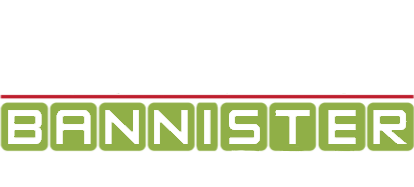how it works
the bannister method
What is Facial Stretch Therapy?
Fascial Stretch Therapy (or FST), a type of stretching that targets not only the muscles, but the fascia, the connective tissue that surrounds muscles, bones, and joints. FST also targets the entire joint and joint capsule, using traction to remove restrictions from movement and to stimulate lubrication. This type of will adjust, and move the arms, legs, spine, and neck in a smooth motion through varying planes of movement.
A Fascial Stretch Therapist will evaluate their client, looking for imbalances, as well as the source of those imbalances. Then using breath to help with movement, the therapist will first warm up the joints and muscles with undulating stretching to maximize blood flow. Then using techniques of slow undulating movement, as well as traction (gently pulling to create space in the joint) and modified PNF ( proprioceptive neuromuscular facilitation), synchronized with the breath, the therapist will stretch the entire body, following a logical anatomical order, to lengthen muscle, increase range of motion, and improve flexibility.
Your flexibility will improve in just one fascial stretch therapy session, and the benefits are cumulative with multiple sessions. Here are just some of the many benefits you will experience from fascial stretch therapy.
What is Thai Bodywork?
Thai bodywork is traditionally performed on a large comfortable floor mat that gives the receiver both comfort, and full-body support. Working on the floor also allows the therapist to move freely around, and above the client, making for effective use of the therapist’s bodyweight, and mechanics. The therapist can also work with the receiver in a variety of positions, including prone, supine, side lying, and seated.
About The Treatment
Treatments are routinely modified to include sensitivities addressing acute, and chronic conditions, including: herniated disks, subluxations, muscle strain, joint replacements, and surgeries.
About The Treatments
Treatments are routinely modified to include sensitivities addressing acute, and chronic conditions, including: herniated disks, subluxations, muscle strain, joint replacements, and surgeries.
Applications for the Treatments
The Thai-Yoga Therapist doesn’t just use the power of their hands and fingers. They use their hands, their fingers, their palms, arms, knees, and feet, along with the receiver’s body weight and their resistance to provide a deeply moving experience. The Thai-Yoga Therapist enters into a meditative awareness adapting every stretch and technique to the client’s exact need, whether soft or strong. Flowing rhythmic compressions using the feet, knees, palms, elbows, forearms and fingers are blended with the stretching positions allowing to body to relax and embrace the healing.
Length Of Therapy Sessions
Customarily, a Thai-Body Work session can lasts from 60 minutes to two hours, depending on the client needs, during which there is a surrendering release, which allows deeper physical, and mental relaxation to restore the body.
What to wear
Thai bodywork -Assisted Therapy session you will wear loose-fitting or stretchy clothing that allows your body to move freely. The techniques used work far beneath the surface of the body, affecting the deeper layers of the muscles, and skeleton system.











